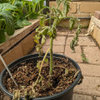Test - Sevin verses Thuricide on cutworms.
delta_charlie
17 years ago
Featured Answer
Comments (7)
carolyn137
17 years agodelta_charlie
17 years agoRelated Professionals
Hershey Landscape Architects & Landscape Designers · Arlington Landscape Contractors · Amesbury Landscape Contractors · Beverly Hills Landscape Contractors · Cincinnati Landscape Contractors · Fort Mill Landscape Contractors · Fort Payne Landscape Contractors · Midland Landscape Contractors · Old Saybrook Landscape Contractors · Tacoma Landscape Contractors · Vadnais Heights Landscape Contractors · Cherry Hill Siding & Exteriors · Kansas City Siding & Exteriors · South Plainfield Siding & Exteriors · Menomonee Falls Siding & Exteriorsjean001
17 years agofarkee
17 years agotomakers
17 years agobstnh
4 years ago
Sponsored
Columbus Area's Luxury Design Build Firm | 17x Best of Houzz Winner!
More Discussions







nedmoore